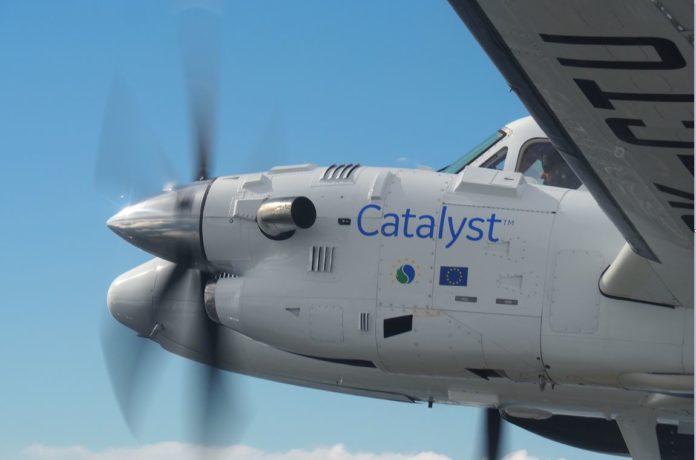This week’s additive milestone at GE Aviation is the successful completion of its Catalyst™ engine’s first flight from the Berlin airport.
The milestone is historic for both the aviation & AM industries, as it would be the first new, clean-sheet turboprop engine to enter the commercial in over 50 years, and the first one made with 3D printed components.
Performed yesterday, on Thursday, September 30, on a Beechcraft King Air Flying Test Bed, the successful 1 hour, 40-minute flight took off from and landed at the Berlin Airport.
The aviation company reminds that the Catalyst™ engine’s program was officially launched in 2015. The first run of the Catalyst™ engine on the Flying Test Bed began in December 2020. In parallel, GE Aviation Turboprop also delivered its first flightworthy engine to its launch customer, Textron Aviation, for the single-engine turboprop Beechcraft Denali. To date, 16 test engines have accumulated more than 2,600 hours of operation in ground tests and completed four certification tests.
“This is a tremendous moment for the Catalyst engine,” said Paul Corkery, general manager of GE Aviation Turboprops. “It is the result of huge efforts by our brilliant team to bring this engine out of the test cell and onto the King Air Flying Test Bed. We’re very encouraged by preliminary data from the first flight, and we’re looking forward to continued flight testing on this revolutionary turboprop engine, alongside our launch customer, Textron, that is heading the same way with their Beechcraft Denali prototype.”
“The first flight was very successful. I must say, everything went flawlessly,” said Sigismond Monnet, Chief Test Pilot. “We actually flew longer than planned, and the engine performed as we expected. I look forward to proceeding with the flight test campaign and expanding the Catalyst’s flight envelope.”
As far as 3D printing is concerned, the company does not reveal which components have been additively manufactured. It does lay emphasis on its 16:1 overall pressure ratio, which enables the engine to achieve as much as 20 percent lower fuel burn and 10 percent higher cruise power compared to competitors in the same size class. These are interesting points for Clean Sky2, the largest European R&D public-private partnerships between the European Commission and the European aeronautics industry, to develop breakthrough technologies devoted to decarbonization..
The Catalyst™ engine’s supply chain and assembly will continue to be based in the industrial European ecosystem. GE sites involved are: GE Aviation Czech, Avio Aero of Italy and Poland, GE Aviation Advanced Technology of Munich (Germany), GE Engineering Design Center of Warsaw (Poland).
Remember, you can post job opportunities in the AM Industry on 3D ADEPT Media free of charge or look for a job via our job board. Make sure to follow us on our social networks and subscribe to our weekly newsletter : Facebook, Twitter, LinkedIn & Instagram ! If you want to be featured in the next issue of our digital magazine or if you hear a story that needs to be heard, make sure you send it to contact@3dadept.com






